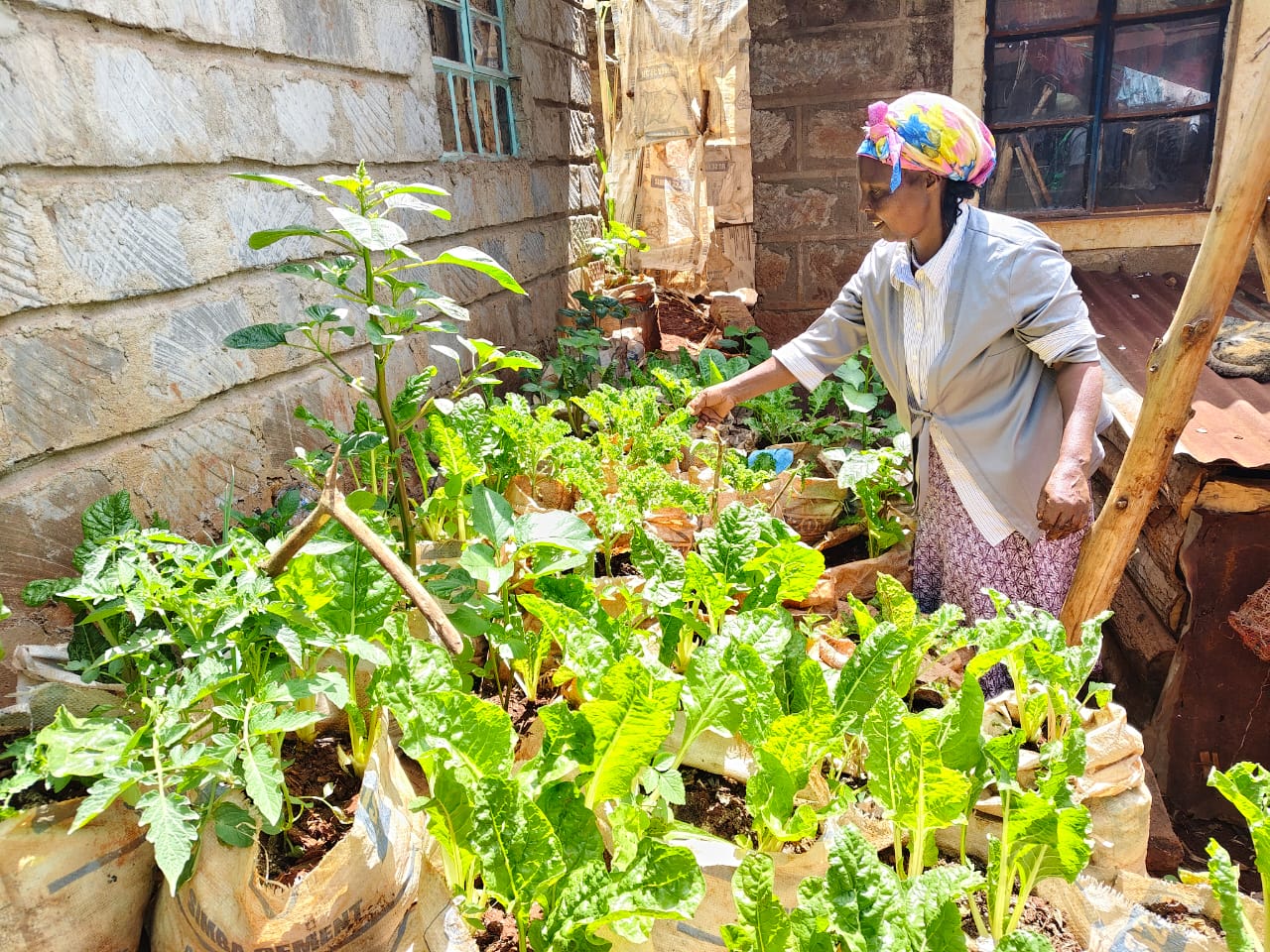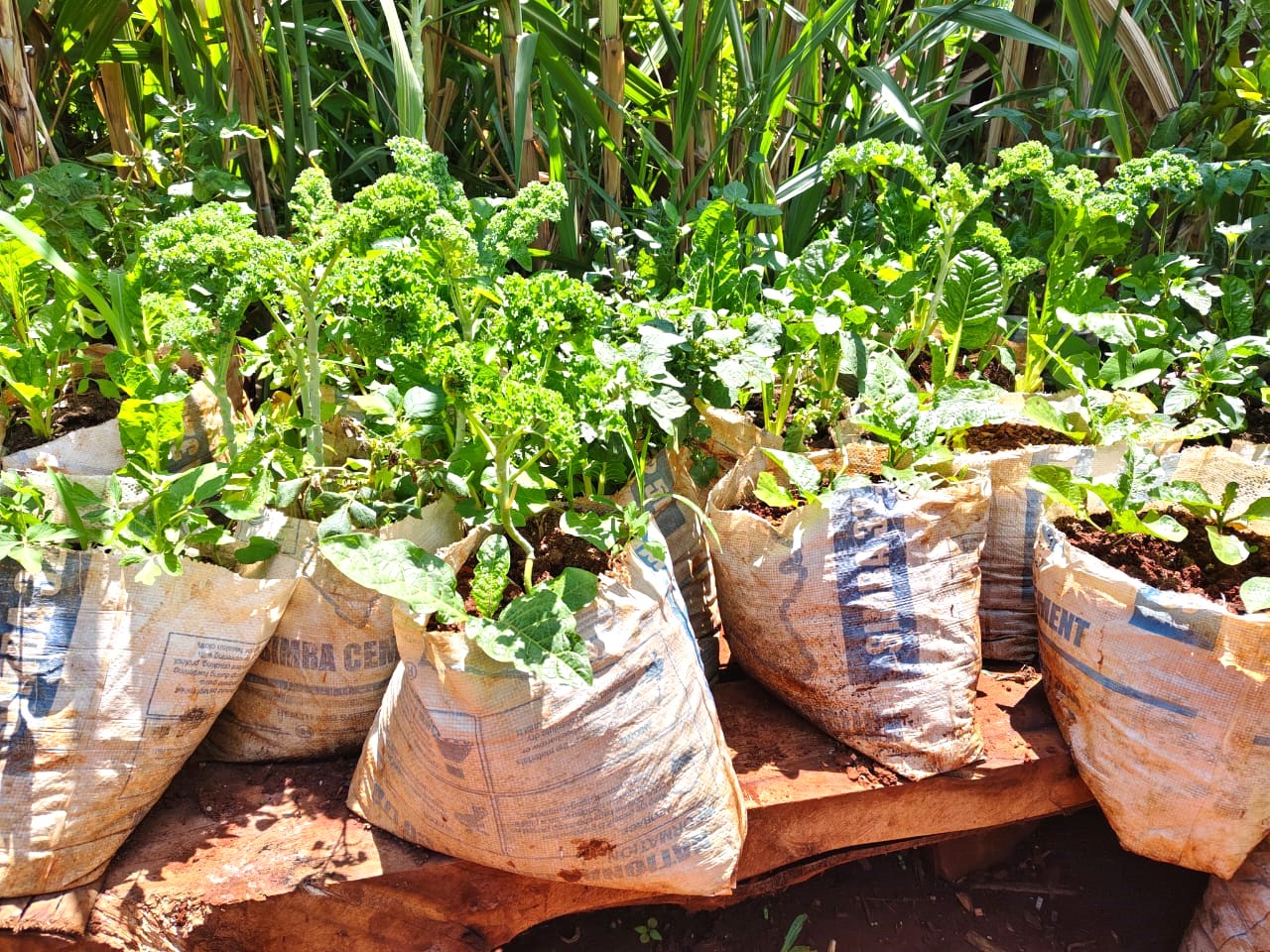
 Joyce Wambui in her kitchen garden in Githama village in Kandara, Murang'a
Joyce Wambui in her kitchen garden in Githama village in Kandara, Murang'aUntil three weeks ago, Joyce Wambui, 53, spent hundreds of shillings on vegetables every week to feed her family of five. Wambui from Githama village in Kandara realised that the vegetables were taking a huge chunk of her earnings despite living in a rural area.
Her family’s farm is small, she explained, and is filled with bananas, a few avocado trees, some food crops and fruits on which they depend on for an income.
The high expenditure on vegetables became untenable as the produce became more expensive due to their unavailability in the semi-arid area.
Decades ago, the village depended on the coffee sub-sector that was flourishing but when it collapsed, so did the local economy, leaving residents scrambling to eke a living.
“In the market, they sell these small bunches of vegetables and I kept having to pay for more as the days went by and it wasn’t sustainable,” she said.
At some point, the family was forced to make do with meals with high carbohydrates and less proteins and vegetables.
This is despite the fact that her mother who is 79 years old, suffers from chronic illnesses and requires a well-balanced diet.
That’s when Wambui decided to do something about it. Outside her house, she cleared a spot that was previously used to keep firewood and created a small kitchen garden.
 A kitchen garden established by a resident of Githama village in Kandara, Murang'a
A kitchen garden established by a resident of Githama village in Kandara, Murang'aShe then mixed cattle and chicken manure from her farm with soil that she put in small sacks collected from the local shopping centre on which she planted assorted vegetables that included amaranth, African Nightshade (managu), curly kale (sukuma matumbo), spinach, sukuma wiki, tomatoes and even onions.
“The only thing that cost me money when I started the kitchen garden was the seedlings. Everything else was readily available,” she said, noting that she has eliminated her need to buy vegetables from the market.
Wambui further noted that reports of harmful agro-chemicals being used on food crops had worried her for years, adding that the garden has reduced her family’s exposure to them by a large extent.
In a neighbouring farm, a group of residents had congregated in the homestead of Susan Murigi to learn about climate change and how they can become more resilient.
Lawrence Njuguna, an agronomist, told the residents that kitchen gardens can ensure their nutrition is enhanced with a year-round supply of vegetables while saving their income.
 A vertical garden established during a training session in Githama village in Kandara, Murang'a county, on November 25, 2025
A vertical garden established during a training session in Githama village in Kandara, Murang'a county, on November 25, 2025Families with little or no space, he explained, can utilise vertical kitchen gardens that also minimise the amount of water needed for the vegetables to grow.
He emphasised the need for residents to focus more on indigenous vegetables and crops that he said are better placed to withstand the hot weather in the area and provide food security.
“Kitchen gardens can survive with non-soapy water from kitchens and is an easy way of keeping families healthy and cutting their meals costs.”
Njuguna trained the residents to establish vertical kitchen gardens using recycled High Density Polyethylene that he said they can form groups to pool resources and buy in bulk.
One vertical garden can feed a family of six comfortably and the farmers are only required to add on some manure to the soil and change the soil altogether annually.
“This kitchen garden can serve you for up to 15 years before it wears down and they can intercrop onions to repel pests or use weeds such as the Mexican marigold and tree marigold. These weeds can also be soaked for a week and used as foliar,” he told the residents.
The training had been facilitated by Women In Climate Change, an organisation that has been championing for climate change resilience and conservation in the grassroots.
Chairperson Diana Muthoni said women are worst affected by climate change, with the responsibility of feeding their families firmly placed on their shoulders.
 Residents of Githama village in Kandara, Murang'a, being trained to establish kitchen gardens using recycled HDPE.
Residents of Githama village in Kandara, Murang'a, being trained to establish kitchen gardens using recycled HDPE.“Women decide what to feed their families. They trek for kilometres in search of water and have to tend to their children,” she said.

















![[PHOTOS] Family, friends receive body of Raila’s sister, Beryl](/_next/image?url=https%3A%2F%2Fcdn.radioafrica.digital%2Fimage%2F2025%2F11%2Fdfe6a9bf-ede1-47a4-bdc0-4f564edb03dd.jpeg&w=3840&q=100)
